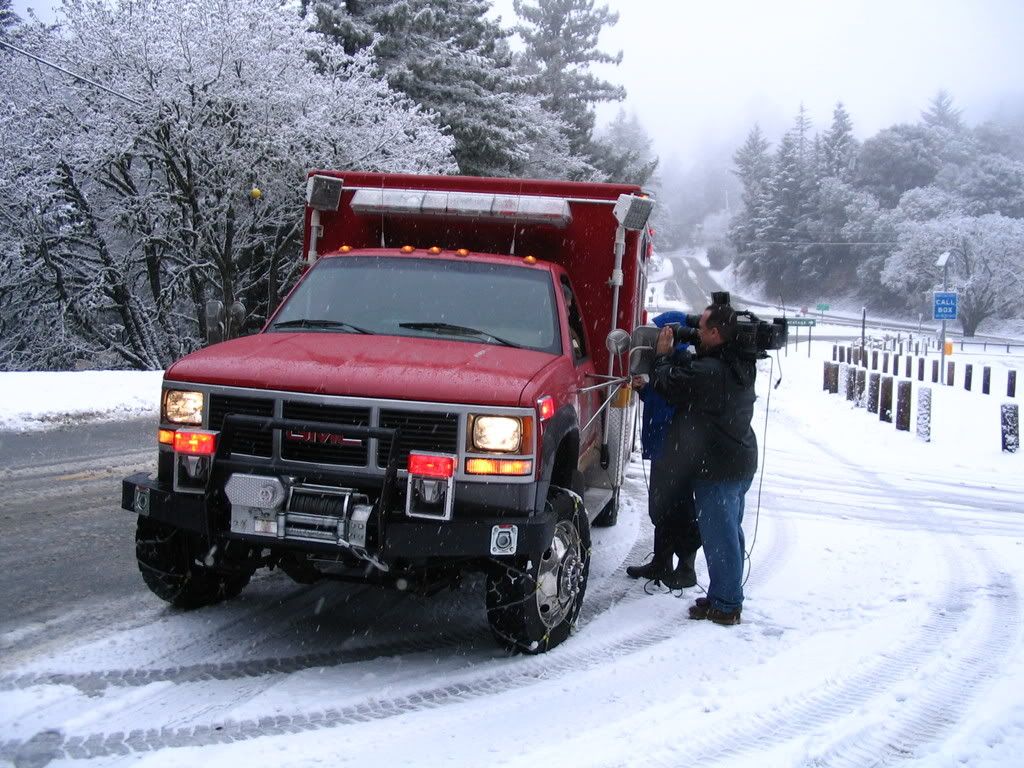bobbolotune
Sep 29, 2015Explorer
Are Dually Extension Brackets Unsafe?
When I thought I had it figured out, now this...
Everyone is saying to get the biggest truck you can. Because even if you don't need it now you may want to upgrade to a heavier truck camper in the future, or add a tow (which is my case, that I want the ability to add a tow in the future).
Which means a dually.
This is the decision that Truck Camper Magazine came to with for their new truck (within the past year I think), and the opinion expressed repeatedly in this forum.
Now someone told me, don't get a dually. And this wasn't just anyone. It someone with extensive truck camper industry experience. What he said:
They are a problem for fitting into parking spaces. This one I already knew and accepted.
Duallys are terrible on snow and ice. This I didn't know. I would assume with 4 rather than 2 tires on the ground that a dually would be that much better for snow and ice. Not so? Although I didn't tell him that I am planning on a 4x4 dually, and possibly that makes a difference.
Then the big one. You shouldn't camp in a truck camper with dually extension brackets. The extension is a hinge that swings in and out. It isn't stable. It is ok for storing the camper off the truck, but you shouldn't camp off the truck in a camper with dually brackets.
I hope those with actual experience can please express an opinion about these topics. About the snow / ice issue, and especially about the dually brackets.
Specifically the camper being discussed uses Happijac jacks and dually brackets. Possibly those are not the best jacks?
He said to get a 1 ton SRW. That a dually is unnecessary. That a 1 ton SRW has enough carrying capacity. But what I read is the next thing people with a SRW do is a $2,000 upgrade to 19.5 tires. Where the dually option is (if I recall) around $1,500. And (at least in the specs for the latest model trucks) you get more payload from a dually than a SRW. Also the recent thread people saying duallys drive better loaded with a camper. But if I can't camp off the truck with dually extension brackets that is a killer problem.
Everyone is saying to get the biggest truck you can. Because even if you don't need it now you may want to upgrade to a heavier truck camper in the future, or add a tow (which is my case, that I want the ability to add a tow in the future).
Which means a dually.
This is the decision that Truck Camper Magazine came to with for their new truck (within the past year I think), and the opinion expressed repeatedly in this forum.
Now someone told me, don't get a dually. And this wasn't just anyone. It someone with extensive truck camper industry experience. What he said:
They are a problem for fitting into parking spaces. This one I already knew and accepted.
Duallys are terrible on snow and ice. This I didn't know. I would assume with 4 rather than 2 tires on the ground that a dually would be that much better for snow and ice. Not so? Although I didn't tell him that I am planning on a 4x4 dually, and possibly that makes a difference.
Then the big one. You shouldn't camp in a truck camper with dually extension brackets. The extension is a hinge that swings in and out. It isn't stable. It is ok for storing the camper off the truck, but you shouldn't camp off the truck in a camper with dually brackets.
I hope those with actual experience can please express an opinion about these topics. About the snow / ice issue, and especially about the dually brackets.
Specifically the camper being discussed uses Happijac jacks and dually brackets. Possibly those are not the best jacks?
He said to get a 1 ton SRW. That a dually is unnecessary. That a 1 ton SRW has enough carrying capacity. But what I read is the next thing people with a SRW do is a $2,000 upgrade to 19.5 tires. Where the dually option is (if I recall) around $1,500. And (at least in the specs for the latest model trucks) you get more payload from a dually than a SRW. Also the recent thread people saying duallys drive better loaded with a camper. But if I can't camp off the truck with dually extension brackets that is a killer problem.
